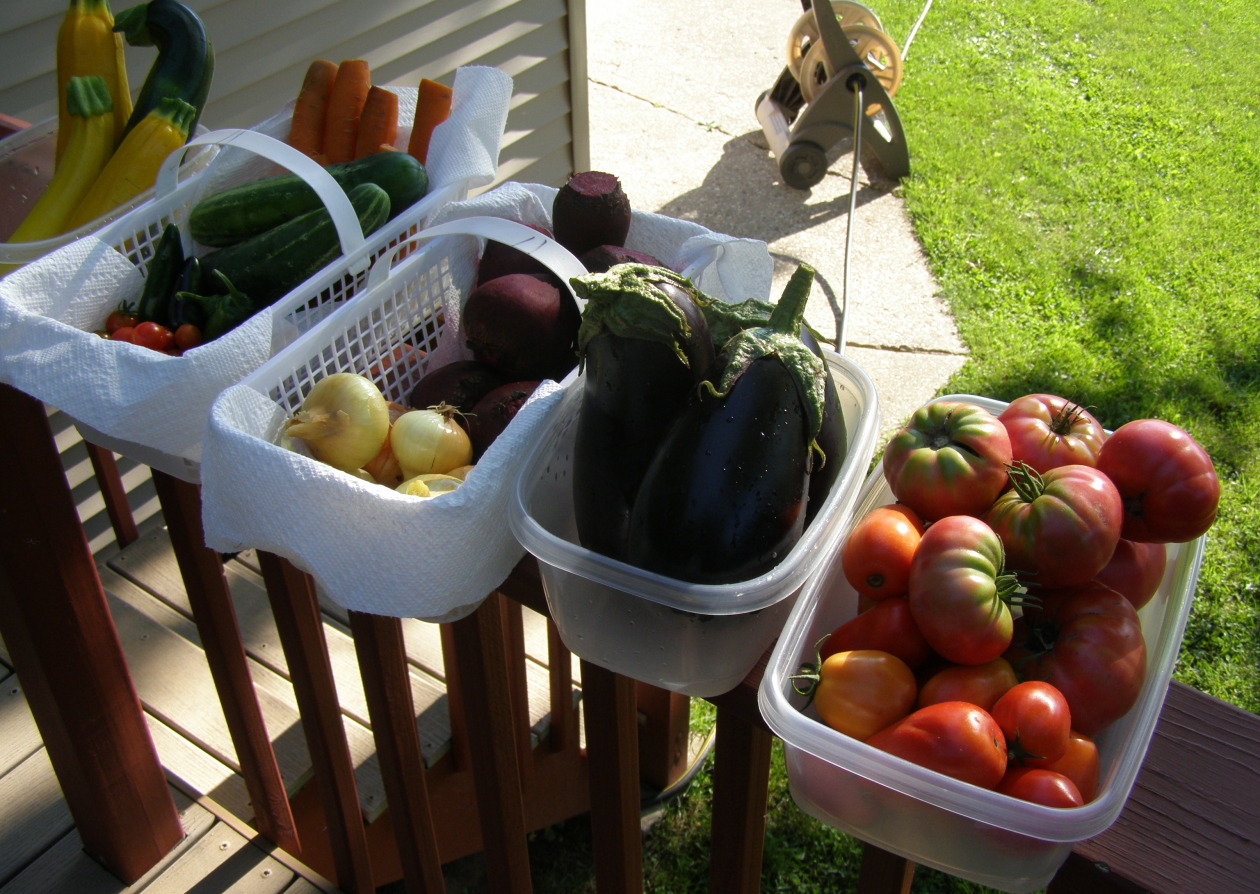I come from a meat and potatoes kind of cooking. Pa couldn’t tolerate spice, garlic or heat of any kind so mom cooked the typical Americana meal in the 70’s: meatloaf and mashed potatoes. The family’s idea of an “exotic meal” consisted of a can with La Choy on the label. I don’t recall having spaghetti and sauce too often, and I can guarantee you this, mom never had a pot simmering of homemade tomato sauce on the stove. I’m not banging on my mom’s cooking, she was a wonderful cook, but we sure could have used some food other than the meat(sometimes liver-GROSS) and potato. The menu from when I was a kid may explain my aversion to meat and my adoration of ethnic foods. Yeah, pasta and sauce isn’t really all that ethnic but homemade sauce and homemade pasta are. When I announced at work what I was doing, my Italian colleague said his mother would cook up big batches and can it. I have to admit, I had to really control myself from shaking him and demanding the recipe from his mother. Since I don’t have an Italian mom or grandmother, I relied, instead, on my DIY bible from the Test Kitchen.
I would love to say the sixteen quarts of red pasta sauce were in celebration of our trip to Italy in May, but I would be lying. It’s more about the number of tomatoes littering my deck than anything else. I found a recipe calling for 30 pounds of tomatoes with minimal processing of the tomatoes and minimal ingredients. Bingo.
So many tomatoes, so little time.
Dip the tomatoes in hot water for 30-45 seconds and then switch to an ice bath. The skins come right off. The tomatoes in the picture have been skinned and quartered.
And then processed in the food processor. I either froze the tomato puree or refrigerated it–depending on when I would get back to it. Refrain from processing the garlic until the day you cook your tomatoes.
Pictured are the pureed tomatoes, basil, organic sugar, red wine vinegar, salt, garlic, and organic tomato paste.
Four kettles of tomato puree, basil, garlic, kosher salt and tomato paste. I stirred the four pots every five minutes or so.
After some serious reduction happened, I was able to combine the four into to two pots. This is painful for my husband to hear but the Le Creuset Dutch Oven yielded the best sauce.
Here is the sauce almost ready for the two tablespoons of vinegar and one teaspoon of sugar.
While the sauce is cooking, wash the jars and collars.
Necessary tools of the canning trade: The first grabs hot jars for you and the second is a funnel.
Place the washed jars into the oven with the temperature set at 215 degrees. I found this method on YouTube, and you heat the jars in the oven instead of a hot water bath. Between the hot jars, hot liquid and hot lids, your jars will seal. I tried it with two batches, and it worked like a charm.
Sixteen Quarts of tomato sauce. .
Big-Batch Summer Tomato Sauce
Adapted word-for-word from, America’s Test Kitchen d.i.y cookbook
America’s Test Kitchen d.i.y. cookbook
Ingredients:
30 pounds tomatoes
12 garlic cloves
1 cup tomato paste
1 cup chopped fresh basil
salt and pepper
1/2 cup red wine vinegar
Sugar
Directions:
1. Bring 4 quarts water to boil in large pot over high heat and prepare ice bath in large bowl. Remove core from tomatoes. In batches, lower tomatoes into boiling water and cook just until skins loosen, 15-45 seconds. Using slotted spoon, transfer tomatoes to ice bath to cool, about 2 minutes. Remove tomatoes from ice bath and remove loosened tomato skins.
2. Process garlic in food processor until minced, about 10 seconds. Transfer to small bowl. Process peeled tomatoes in batches in now-empty food processor until almost smooth, 15-20 seconds. Transfer to large bowl.
3. Combine 3 1/2 quarts tomato puree, one-quarter of minced garlic, 1/4 cup tomato paste, 1/4 cup basil, and 1 1/2 teaspoons salt in each of 4 Dutch ovens or large pots and bring to simmer over medium heat. Continue to cook, stirring occasionally, until sauce in each pot has thickened and reduced to 2 quarts, 1 1/2 to 2 hours(I found 2 1/2 was a more accurate time frame for my sauce). Stir 2 tablespoons vinegar and 1 teaspoon sugar into each pot, seasoning with additional sugar to taste. Also season salt and pepper to taste.
4. Transfer hot tomato sauce to 8 hot, sterilized quart jars, leaving 1/2 inch of headspace at top, and process in a boiling water bath for 20 minutes.
Well, I am set for pasta sauce until tomato time next year. Homemade pasta??? That’s for a future blog.

